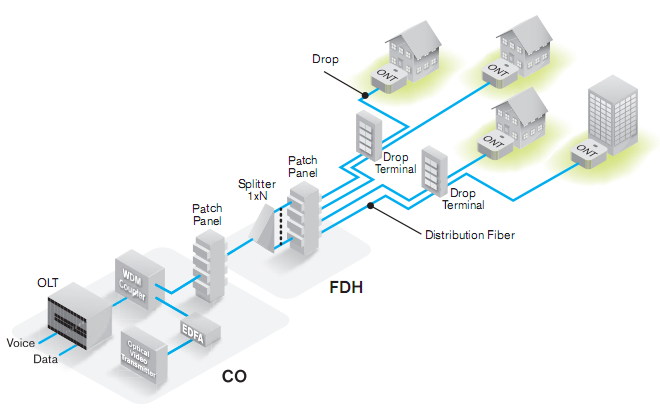How to become a reference for FTTH/PON testing
Singlemode optical fiber cable is used in long-haul and metropolitan networks because it significantly reduces equipment and maintenance costs, while dramatically increasing quality of service (QoS). Now, fiber-optic cable is making its way to the last mile in fiber-to-the-home (FTTH). FTTH technology is a great way to provide high bandwidth from the central office (CO) to subscribers because it uses a passive optical network (PON). This system is not just cost-effective, it increases reliability and makes network testing, measuring and monitoring easier. Plus, it adheres to the same basic principles as standard fiber networks, using much of the same equipment for installation and maintenance.

The general architecture of a typical FTTH network can be described as follows. At the head end (i.e., the CO), the optical line terminal (OLT) interfaces with the public-switched telephone network (PSTN) and Internet services. Data, voice and video services are carried simultaneously and in different directions at different wavelengths (1310 upstream, 1490/1550 nm downstream or 1260 upstream and 1575 downstream for NextGen-PON). At 1550 nm, the optical video transmitter also converts analog RF video services into optical format. The wavelength division multiplexing (WDM) coupler combines the 1550 nm and 1490 nm wavelengths and transmits them downstream together.
Between the WDM and the splitter, all optical signals are carried on an F1 feeder cable. The splitter divides the signal into 32 (or even 64) and each subscriber needs an optical network terminal (ONT) to be able to take advantage of these voice, data and video services.
Still want to become a reference for FTTH/PON testing? Here is the cheat sheet.
If you are interested in getting a complete introduction to FTTH technology and testing for installation, activation and troubleshooting of PONs, well EXFO recently released the fifth edition of its highly popular FTTH PON Reference Guide. This latest issue is now available in print and online copies, but also in an interactive iPad version, which you can download from the App Store. Feel free to get your own copy and share it with colleagues.




